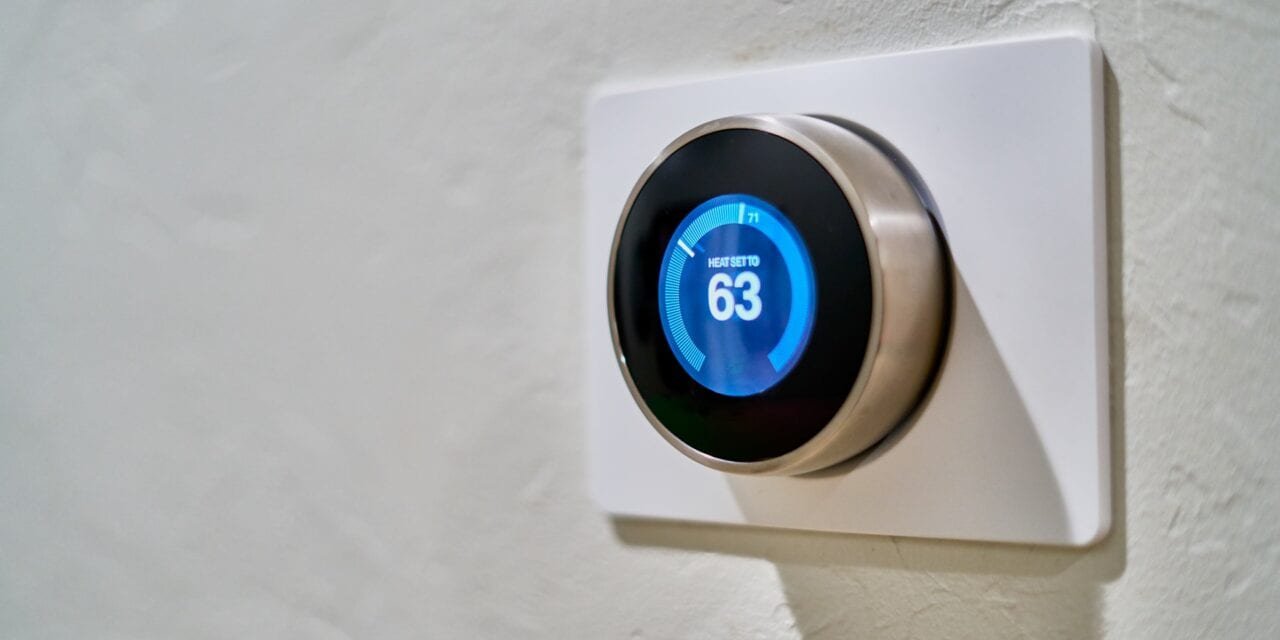The Evolution of HVAC: The Smart Thermostat
There are three main ways to reduce HVAC expenses in buildings: using mechanical equipment with a higher efficiency, improving the thermal envelope, and settings thermostats at an optimal temperature. A thermostat that is set too low or too high increases energy expenses, since HVAC equipment works harder to keep the desired temperature.
Thermostat technology has been evolving along with HVAC equipment and other mechanical installations. The first thermostats were analog, and temperature was normally adjusted with a dial – these may still be found in older installations. Thermostats then became digital, but the first versions still required a manual temperature input. Manufacturers then developed programmable thermostats that allowed scheduled temperature settings, and modern smart thermostats can learn usage habits to program themselves.
How Extreme Thermostat Settings Waste Energy
Modern HVAC equipment can adjust its output depending on the heating and cooling loads of a building. The required output is determined by building features, but it also depends on the thermostat setting. For example, if an air conditioning system operates when the outdoor temperature is 95°F, reaching an indoor temperature of 78°F consumes less energy than reaching 72°F. A similar principle applies to space heating during winter.
Even if the HVAC equipment in a building has the highest efficiency in the market, optimal performance is not reached if thermostat settings cause an excessive load on the system.
- The US Department of Energy recommends keeping thermostats below 68°F during winter, and above 78°F during summer.
- When a home or building area is empty, the thermostat can be set back by 7 to 10°F. According to the US DOE, 8 daily hours of setback can achieve annual energy savings of around 10%.
- Note that “setback” has a different meaning for heating and cooling: a lower temperature setting saves energy during winter, and a higher setting saves energy during summer.
When a thermostat is set too low or two high, the entire building becomes less efficient. Consider that heat transfer between two areas increases along with temperature difference. On a winter day, for example, a home that is 20°F warmer than outdoor air loses heat faster than another home that is only 15°F warmer. In this case, the space heating system not only deals with an increased workload, but also with higher heat losses.
Programmable Thermostats: One Step Further in Efficiency
While many property owners are aware that extreme thermostat settings hurt HVAC performance, manually adjusting all thermostats in a building can be time-consuming and tedious. Programmable thermostats allow a scheduled temperature setting, and there is no need to adjust them manually according to heating and cooling needs. Temperature setback recommendations from the US DOE can be implemented more easily with a programmable thermostat, as long as the occupancy schedule is known.
The main challenge when using programmable thermostats is figuring out the optimal schedule for each area in the building. Also consider that individual preferences may change, even if several building areas have similar functions.
Some programmable thermostat models are held back by a confusing interface, and occupants may simply use them as manual thermostats. In these cases, the benefits of a scheduled temperature setting are lost.
Smart Thermostats: Simple and Efficient HVAC Controls
In simple terms, a smart thermostat is a programmable thermostat that can create its own schedule based on usage patterns. This optimizes the operation of HVAC systems, and there is no need to program temperature settings. A smart thermostat has all the benefits of a programmable unit, enhanced with basic artificial intelligence.
Smart thermostats are an excellent complement for HVAC equipment upgrade. Efficient heating and cooling systems reduce energy expenses by themselves, while a smart thermostat ensures their capacity is used as efficiently as possible.
Many electricity consumers are subject to time-of-use tariffs, which have the highest electricity price at times when the total load on the power grid is high. Smart thermostats can be configured to ramp down HVAC equipment during peak demand hours, and some utility companies have developed reward programs for users who implement this operating mode.
Before implementing smart thermostats, make sure they are compatible with your heating system. Most smart thermostats are designed for gas-fired heating systems, so make sure you check compatibility if your building uses heat pumps or resistance heaters. Also keep in mind that steam heating and radiant floor heating have a slower response than other heating configurations – smart thermostats must adjust their temperature setting earlier when used with these systems.
Author Bio
Michael Tobias is the founder and principal of Chicago Engineers. He is a graduate of Georgia Tech class of 2004, with a Bachelors of Mechanical Engineering with honors. His innovative approach to MEP engineering comes from graduating GE’s Engineering Leadership Program, where he designed wind turbines and biofuel power plant engines. Michael’s passion within design is energy efficiency and green technology.
Feature Photo by Dan LeFebvre on Unsplash
















